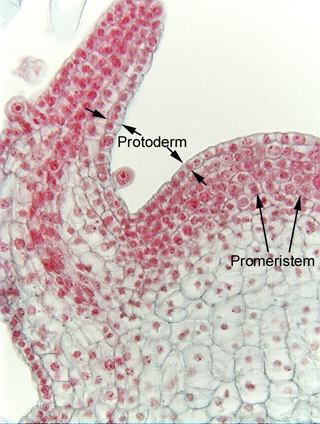
During the course of its life cycle, the plant produces multiple meristems and primordia and these will acquire different identities to give rise to different organs. The apical and axillary meristems are usually indeterminate, whereas the leaf primordia are most often determinate. After germination, the shoot apical meristem (SAM) produces phytomers repetitively which represent an internodal stem with a node comprising of a leaf subtending an axillary meristem. The continuous production of new meristems is a characteristic feature in plants and accounts for their distinctive indeterminate growth. The funders had no role in study design, data collection and analysis, decision to publish, or preparation of the manuscript.Ĭompeting interests: The authors have declared that no competing interests exist. This is an open-access article distributed under the terms of the Creative Commons Attribution License, which permits unrestricted use, distribution, and reproduction in any medium, provided the original author and source are credited.įunding: This work was supported by Genome Canada, National Research Council publication number 50141. Received: MaAccepted: NovemPublished: December 23, 2013Ĭopyright: © 2013 Risseeuw et al. Somers, Ohio State University, United States of America (2013) An Activated Form of UFO Alters Leaf Development and Produces Ectopic Floral and Inflorescence Meristems. These novel phenotypes along with the mutant phenotypes of UFO orthologs in other plant species suggest a broader function for UFO in plants.Ĭitation: Risseeuw E, Venglat P, Xiang D, Komendant K, Daskalchuk T, Babic V, et al. The findings of this study also suggest that UFO promotes the establishment of the lateral meristems and primordia in the peripheral zone of the apical and floral meristems by enhancing the activity of LFY. Furthermore, the gain-of-function phenotypes are dependent on LFY and the SEPALLATA (SEP) MADS-box transcription factors, indicative of their functional interactions with UFO. These striking phenotypes reveal that developing leaves maintain the competency to initiate flower and inflorescence programs. In these lines, the rosette and cauline leaf primordia exhibit reiterated serration, and upon flowering produce ectopic meristems that develop into flowers, bract leaves and inflorescences.
#Leaf primordia Activator
Here we show that the normal determinacy of the developing Arabidopsis leaves is affected by the expression of a gain-of-function UFO fusion protein with the VP16 transcriptional activator domain. The ufo mutants display defects in other parts of the flower and the inflorescence, suggestive of additional roles. UNUSUAL FLORAL ORGANS (UFO) is a co-activator of LEAFY and is required for proper activation of APETALA3 in the floral meristem during the specification of stamens and petals.

In Arabidopsis, the transcription factor LEAFY (LFY) functions as a master regulator of a gene network that is important for floral meristem and organ specification. Plants are unique in their ability to continuously produce new meristems and organ primordia.


 0 kommentar(er)
0 kommentar(er)
